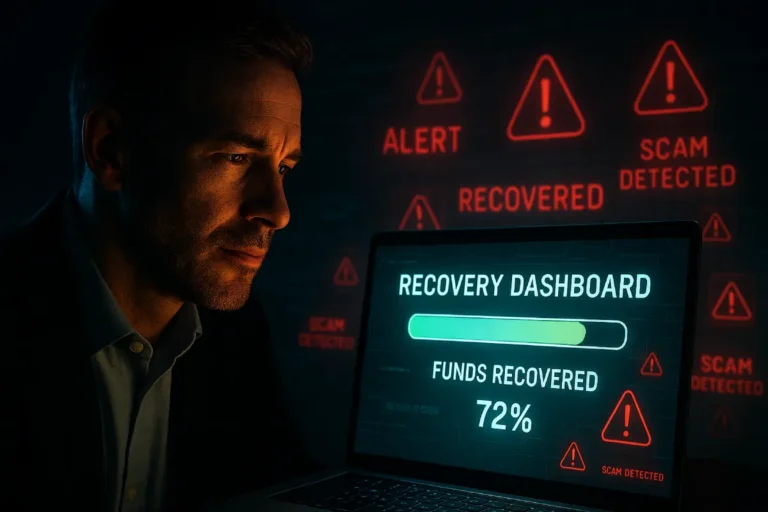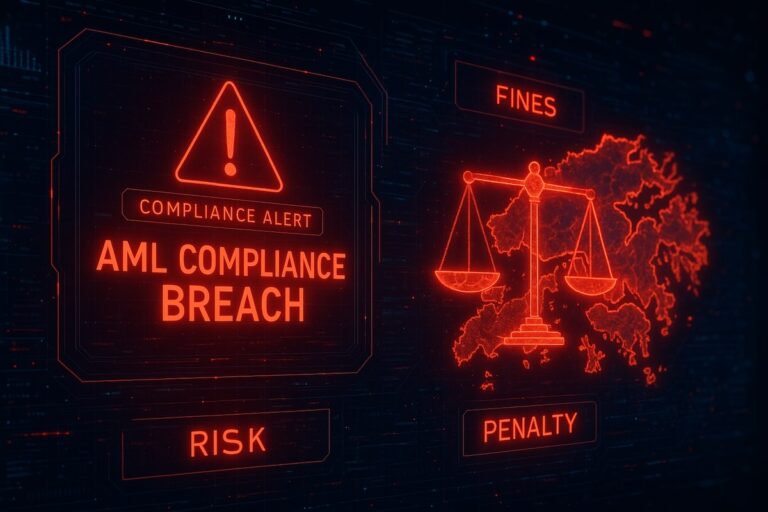Smart contracts are automated code that moves your money around according to rules, which is great when the rules are send me yield from this liquidity pool but less great when the rules are secretly send everything to the scammer’s wallet. And because blockchain transactions are irreversible and happen across jurisdictions, by the time you realize you’ve been scammed, your money is already gone and potentially impossible to recover.
I’m going to walk through how these scams actually work, what red flags you should watch for, and what you can do if you’ve already signed a malicious contract.
What are Smart Contract Scams?
Smart contracts are self-executing pieces of code stored on a blockchain that automatically carry out transactions when predefined conditions are met. They eliminate the need for intermediaries, enabling transparent, fast, and decentralized financial operations.
However, the same automation that powers DeFi innovation can also be exploited. Smart contract scams occur when attackers manipulate vulnerabilities in contract code or deploy intentionally malicious contracts to deceive users and drain their funds. Because transactions are irreversible once executed on-chain, even a single interaction with a fraudulent contract can result in permanent loss. Common schemes include:
- Fake DeFi Protocols: Scammers create convincing replicas of legitimate DeFi platforms, copying their layouts, whitepapers, and social media pages. These fraudulent protocols promise unusually high yields or early-access staking pools to attract deposits. Once users connect their wallets and approve transactions, the smart contract transfers funds directly to the perpetrator’s address. In Hong Kong, these scams frequently circulate through Telegram groups or influencer promotions.
- Flash Loan Attacks: This exploits the instant lending mechanisms in DeFi protocols, allowing scammers to borrow large amounts of cryptocurrency without collateral. They use these funds to manipulate token prices, exploit contract bugs or drain liquidity pools all before immediately repaying the loan.
- Malicious Token Contracts: In this scheme, scammers issue tokens with hidden functions coded directly into the smart contract. These functions can prevent investors from selling, impose massive transaction taxes, or reroute transfers to the scammer’s wallet.
- Rug Pulls: This is less of a hack and more of a common fraud scheme. A rug pull happens when developers promote a new token or liquidity pool, build hype through fake partnerships or celebrity endorsements, and then abruptly withdraw all liquidity once investor money flows in.
How to Identify Smart Contract Scams
Smart contract scams can appear deceptively professional, with whitepapers, tokenomics charts, and influencer endorsements. However, careful due diligence can reveal warning signs long before you connect your wallet or invest.
- Due Diligence Checklist
- Unaudited Contracts: Avoid projects that lack third-party smart-contract audits from reputable firms. A public audit report should be accessible, verifiable, and issued by a known security partner.
- Anonymous Teams: Transparency is essential. Be cautious of developers who use aliases or have no public profiles, LinkedIn presence, or previous projects.
- Unrealistic Returns: Any protocol promising guaranteed high yields or “risk-free” passive income is likely fraudulent. Sustainable DeFi projects disclose both risk and reward.
- Limited Liquidity: Check trading volume and liquidity-pool depth. If a token’s liquidity is locked to only one address or can be withdrawn suddenly, it’s a major red flag.
- Technical Warning SignsEven without coding experience, you can spot indicators of malicious intent:
- Contracts that request unnecessary permissions, such as spending unlimited tokens.
- Code not verified on public explorers like Etherscan or BscScan.
- Tokens that prevent transfers or modify balances unexpectedly.
- Always verify contract addresses from official sources before signing or approving any transaction.
- Social Engineering Tactics in the Hong Kong MarketMany scams in Hong Kong rely more on psychology than programming. Scammers build credibility through local Telegram groups, Discord servers, or influencer partnerships, often mixing Cantonese-language marketing with English technical jargon to appear authentic. Common tactics include:
- Creating urgency through “exclusive pre-sale” or “whitelist closing soon” messages.
- Faking endorsements from regional celebrities or well-known crypto figures.
- Impersonating legitimate DeFi projects with subtle name variations or cloned websites.
How to Protect Yourself from Smart Contract Scams
In Hong Kong’s rapidly evolving crypto landscape, security begins with awareness and discipline. Protecting your digital assets isn’t just about technology, it’s about consistent due diligence, informed decision-making, and community engagement.
- Education and AwarenessKnowledge is your strongest safeguard. Understand how DeFi protocols operate, recognize common scam patterns, and stay updated on new exploit tactics.
- Using Reputable PlatformsOnly use verified, audited, and well-established DeFi or exchange platforms with transparent teams and published security reports. Access platforms directly through bookmarked URLs and avoid connecting wallets to links shared in private groups or social channels.
- Community Resources and Local Crypto GroupsEngage with trusted Hong Kong crypto communities on Discord, Telegram, and at in-person meetups. These groups often share early warnings about fraudulent projects and insights into legitimate opportunities emerging in the market.
- Regulatory UpdatesFollow updates from the Hong Kong Securities and Futures Commission (SFC) and other financial regulators. Staying informed about policy changes, enforcement actions, and licensing frameworks helps identify credible projects and maintain compliance awareness.
What to Do If You’ve Been Scammed
Even the most experienced investors can fall victim to sophisticated smart contract scams. If you suspect you’ve been targeted, acting quickly and strategically can make a critical difference in your chances of recovery.
Act fast, the first 24 hours are critical:
- Stop all further actions: Disconnect your wallet, stop all transactions, and record the scammer’s wallet address, transaction hashes, and communication logs.
- Preserve every detail: Screenshots, emails, chat messages and platform links are critical as evidence
- Report to the Authorities: Report immediately to the Hong Kong Police, SFC, and the affected marketplace.
- Seek Professional On-Chain Investigation: Blockchain transactions are permanent. With expert tools, stolen funds can often be traced, even across complex laundering routes.
Start Your Recovery with Sphere State Group
The anonymity of smart-contract scammers ends where blockchain forensics begins. At Sphere State Group, we trace stolen cryptocurrency through complex smart-contract and DeFi flows, uncovering critical leads that support law enforcement collaboration and asset recovery.
If you’ve fallen victim to a smart contract exploit or DeFi fraud, don’t lose hope. Contact us today for a confidential consultation and learn how our experts can help you trace, document, and recover your stolen digital assets.



